It's been a relatively quiet start to the 2025 Atlantic Hurricane Season! Our first named storm of the season (Andrea) developed in late-June. As we approach the end of July, only three names have been used from this year's Atlantic hurricane name list. The next name up on the 2025 Atlantic Hurricane list is Dexter.
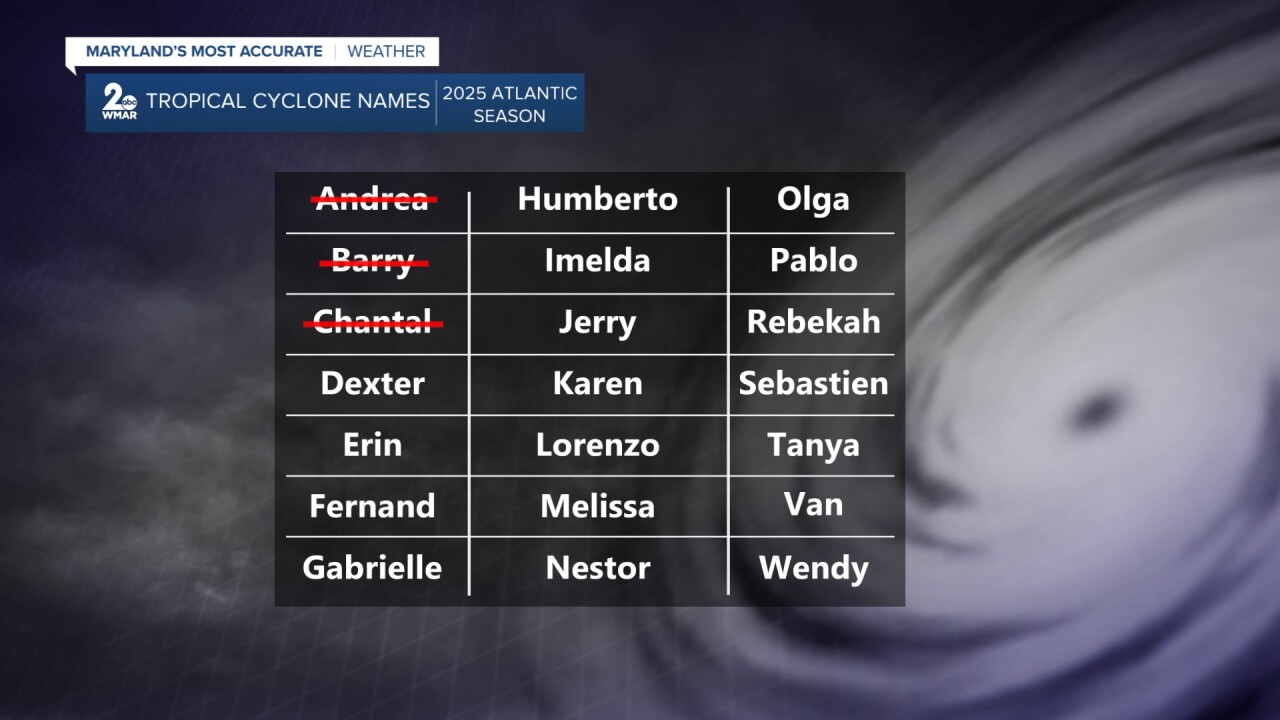
Climatologically, based on the 30-year average from 1991-2020, the first hurricane typically forms in early to mid-August, while the first major hurricane (category 3 or higher) usually develops in late-August or early September. Remember, hurricane season runs through the end of November, with the most active months being August, September, and October. The climatological peak of the season is around September 10th. (Image from NOAA)
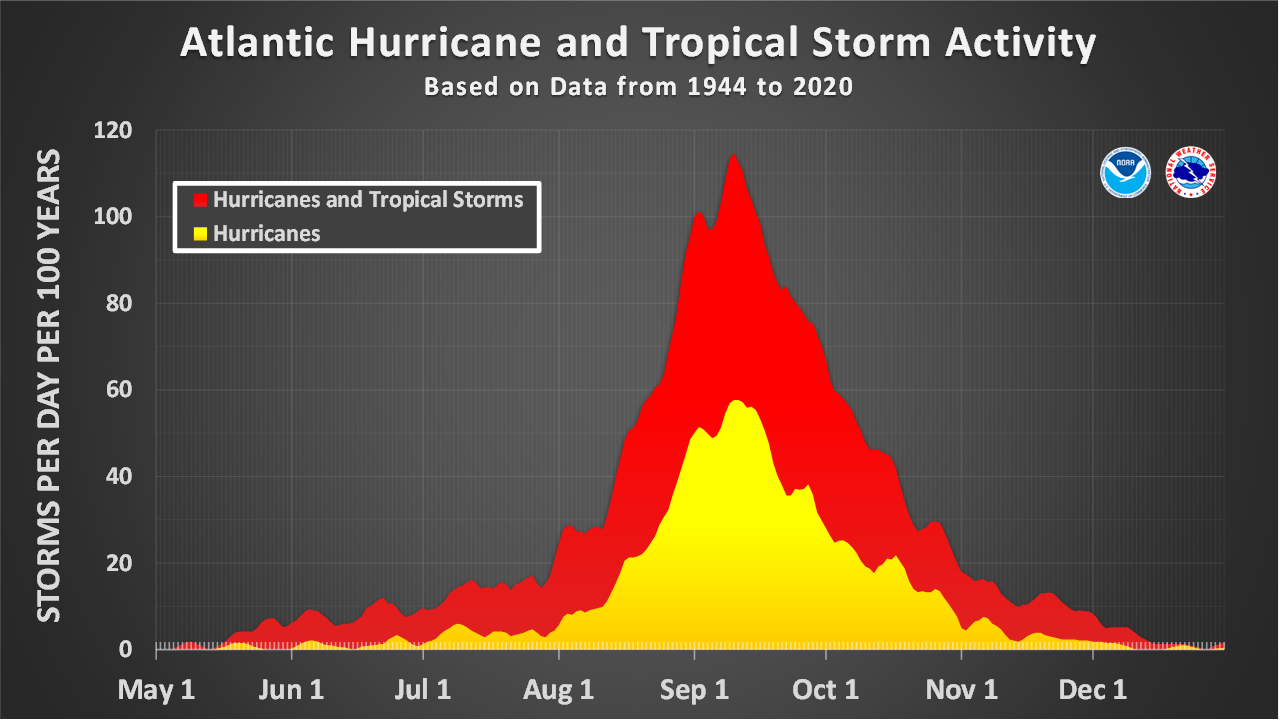
The maps below from NOAA highlight where the center of named storms and hurricanes have historically traveled during those peak months over a 77-year period (1944-2020), but normalized to 100 years. As water temperatures rise, the typical area of storm formation shifts from the Caribbean and Gulf, to the open Atlantic, where tropical waves off the coast of Africa become more likely to organize. It is evident that the number of named storms and hurricanes over a 100-year period is greatest in September.
August:
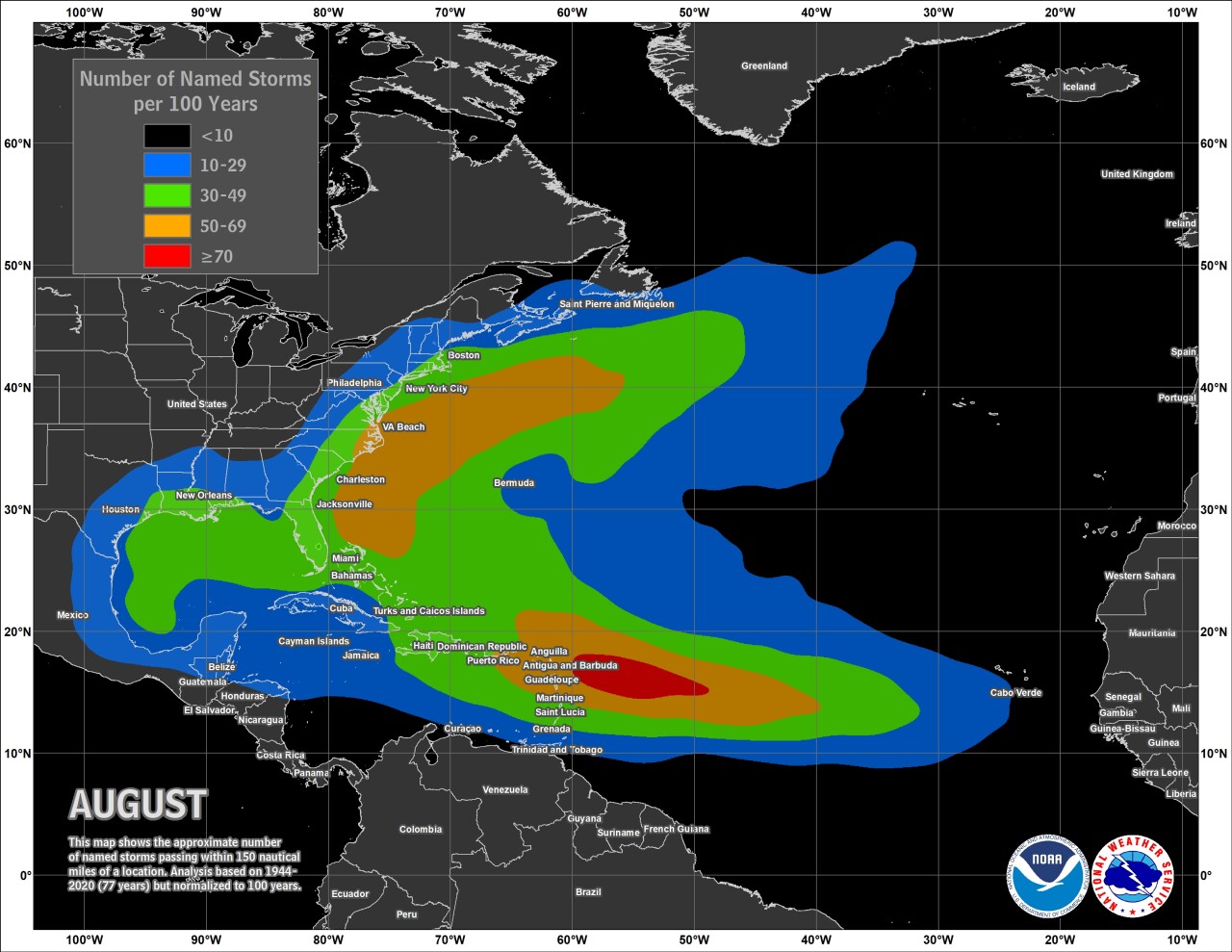
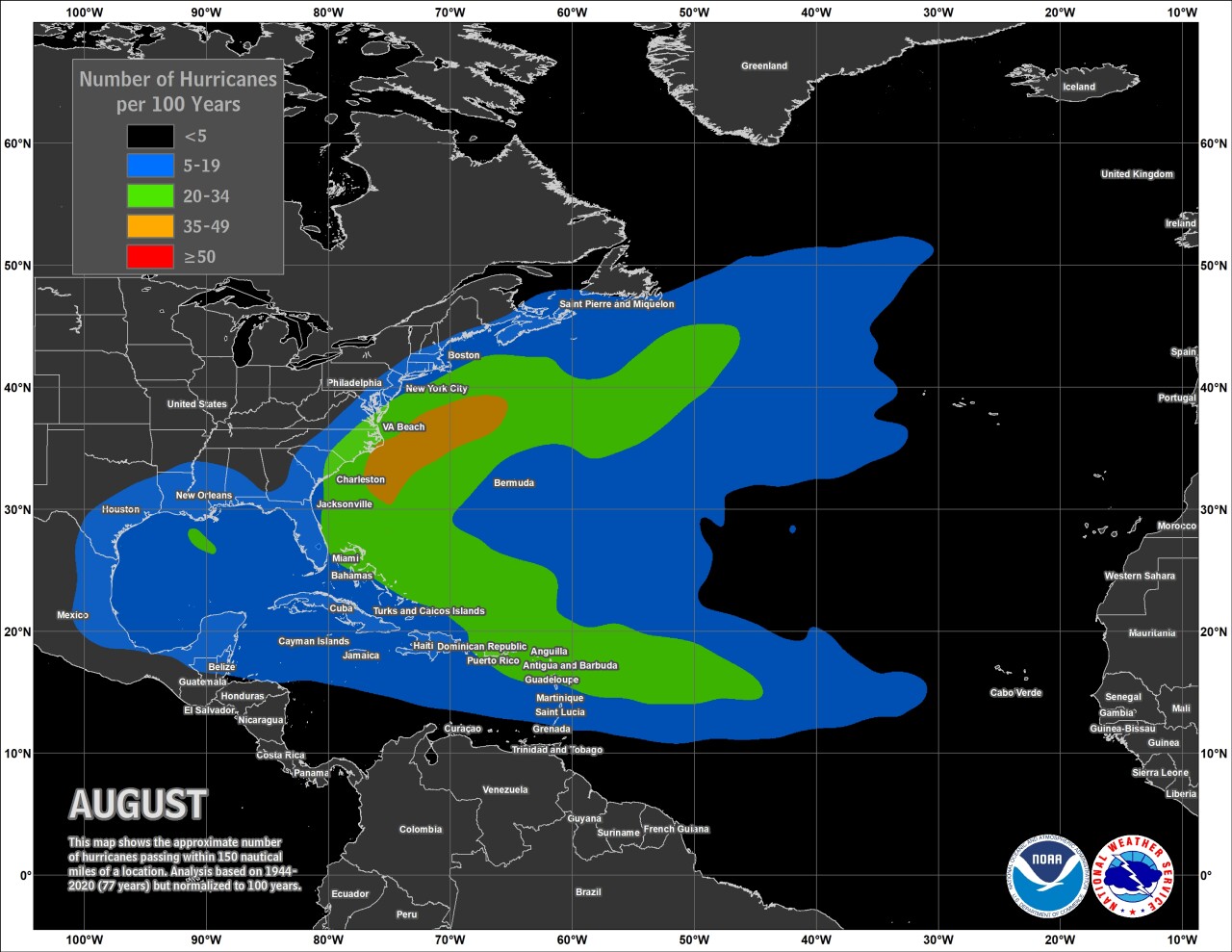
September:
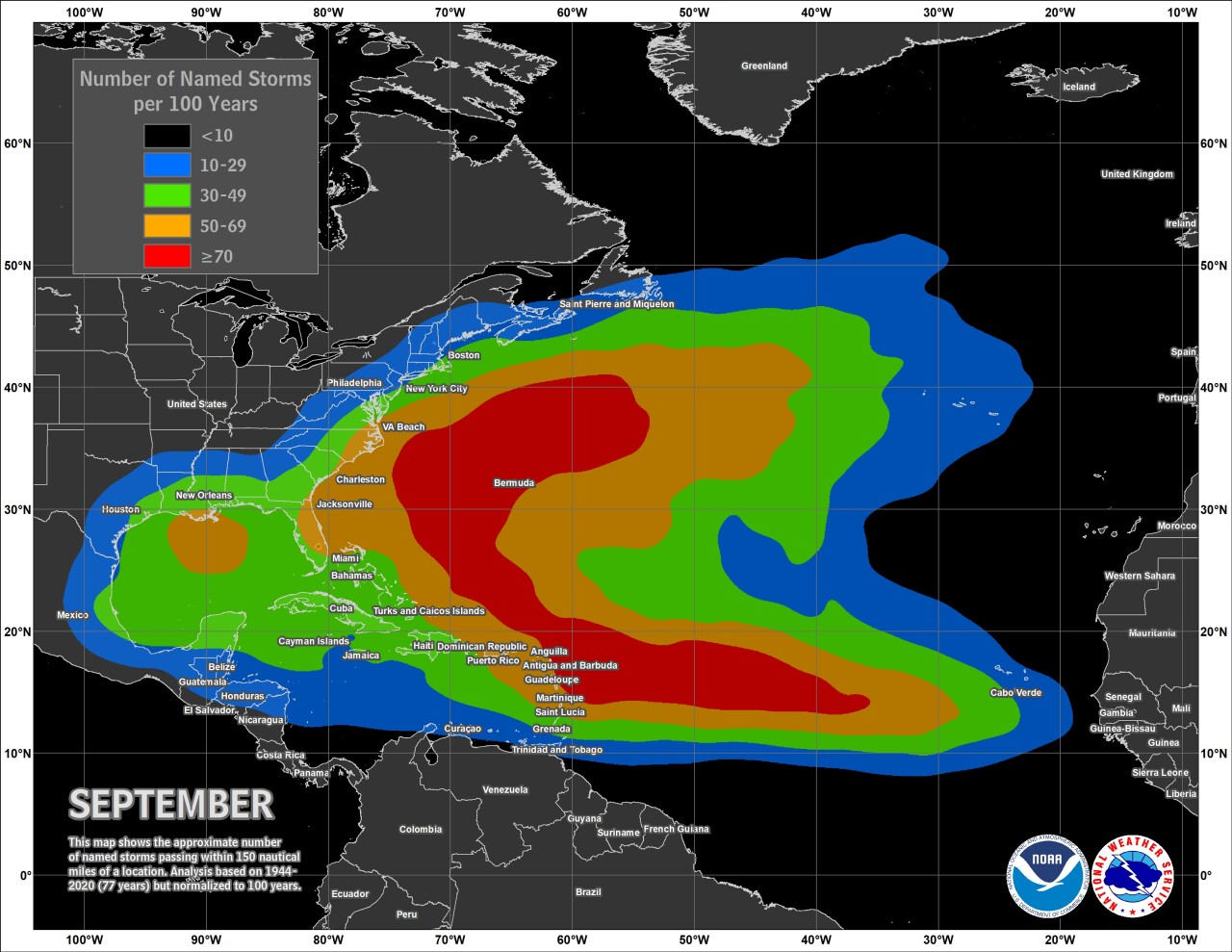
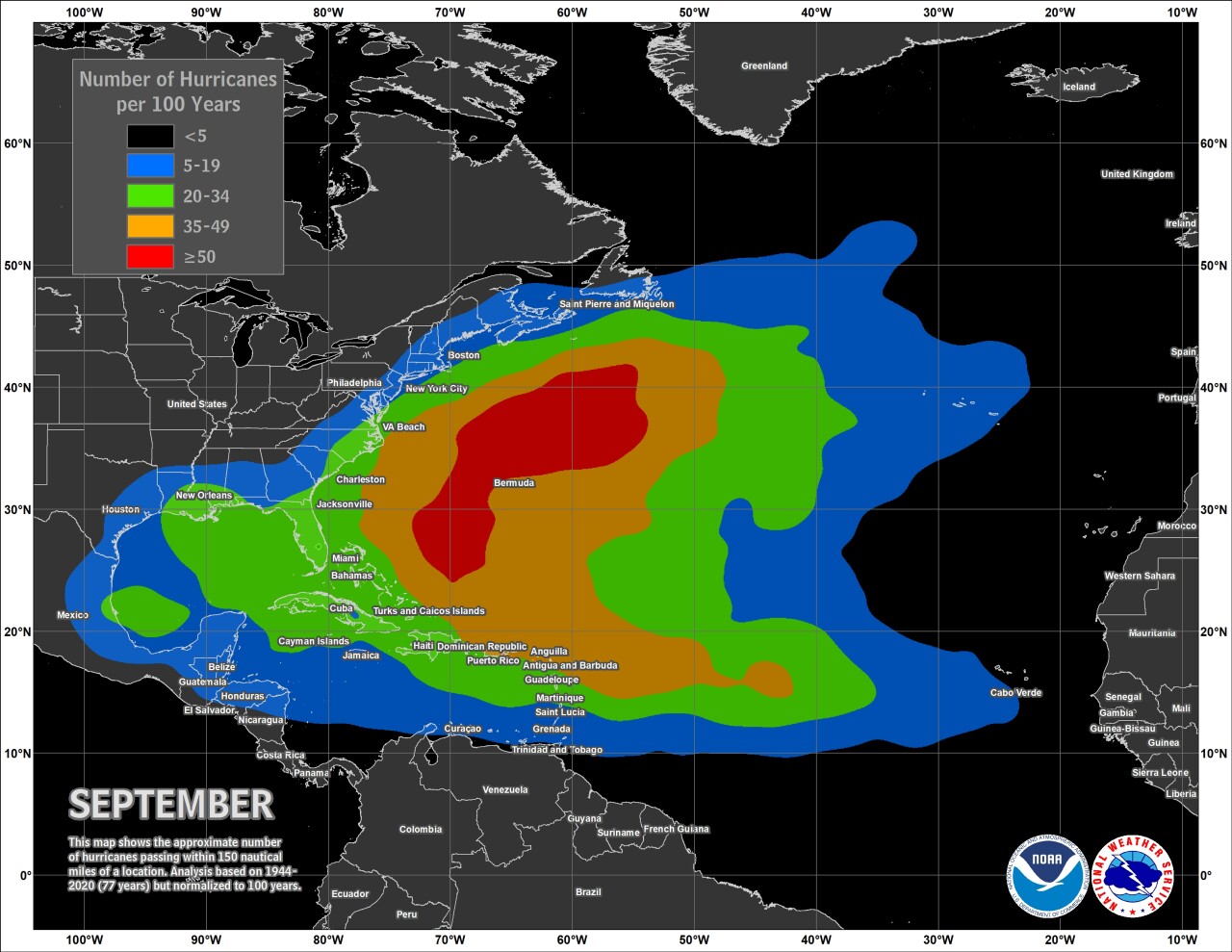
October:
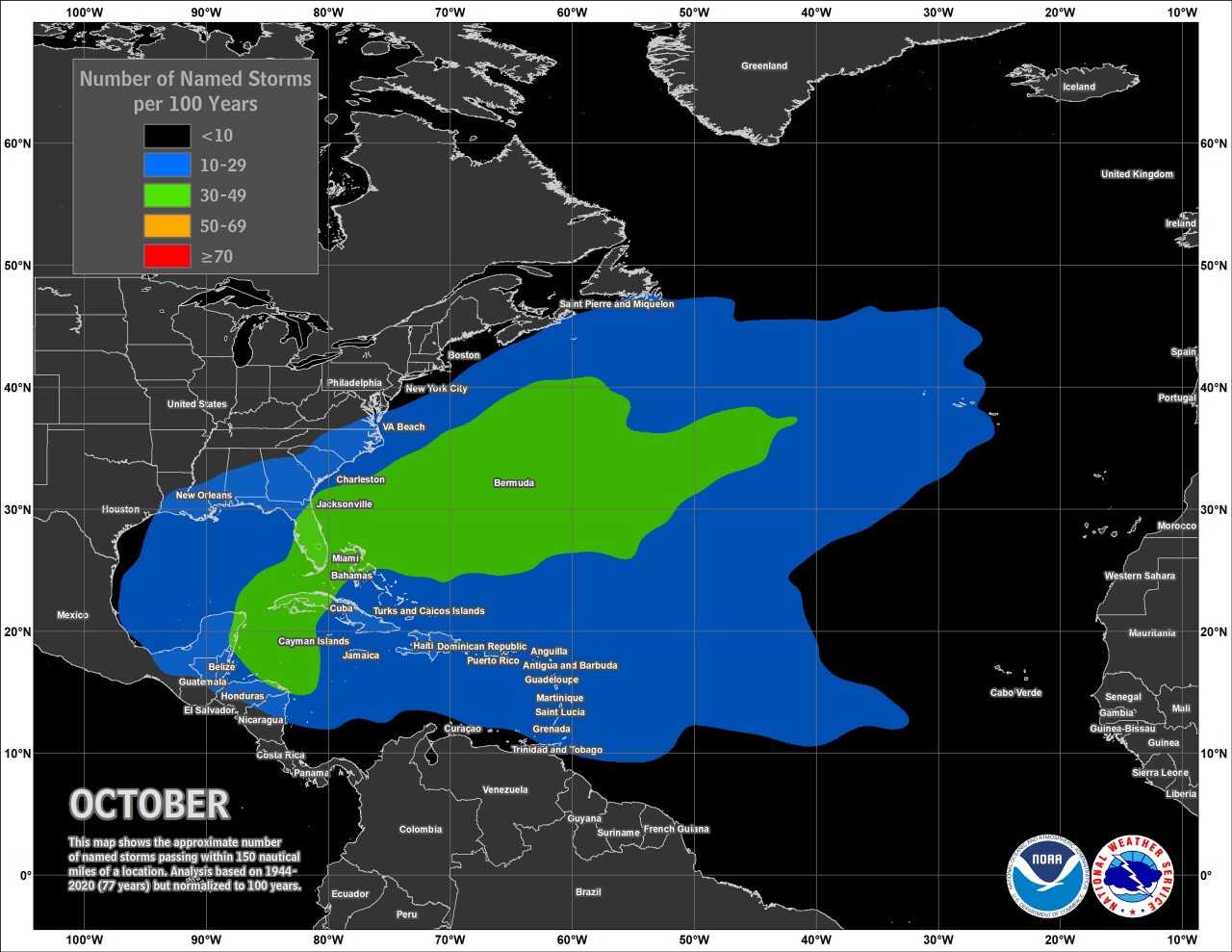
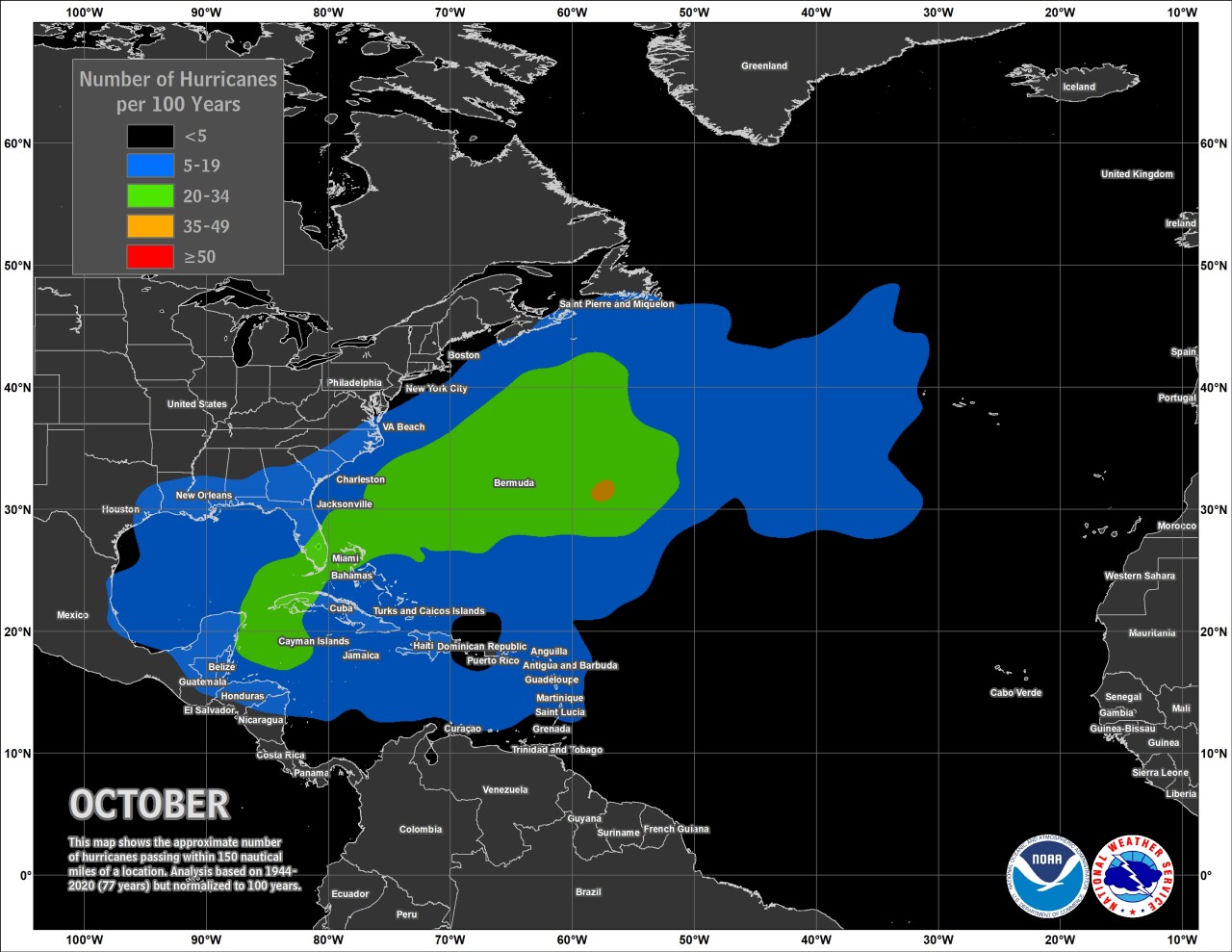
Currently, there's a disorganized wave of showers and storms near the Lesser Antilles. The potential for tropical development is very low over the next several days as it is running into decent wind shear (pulls tropical systems apart by removing heat and moisture) and some dusty air sits over the Atlantic. It's safe to say that this is certainly an unfavorable environment for tropical cyclones.
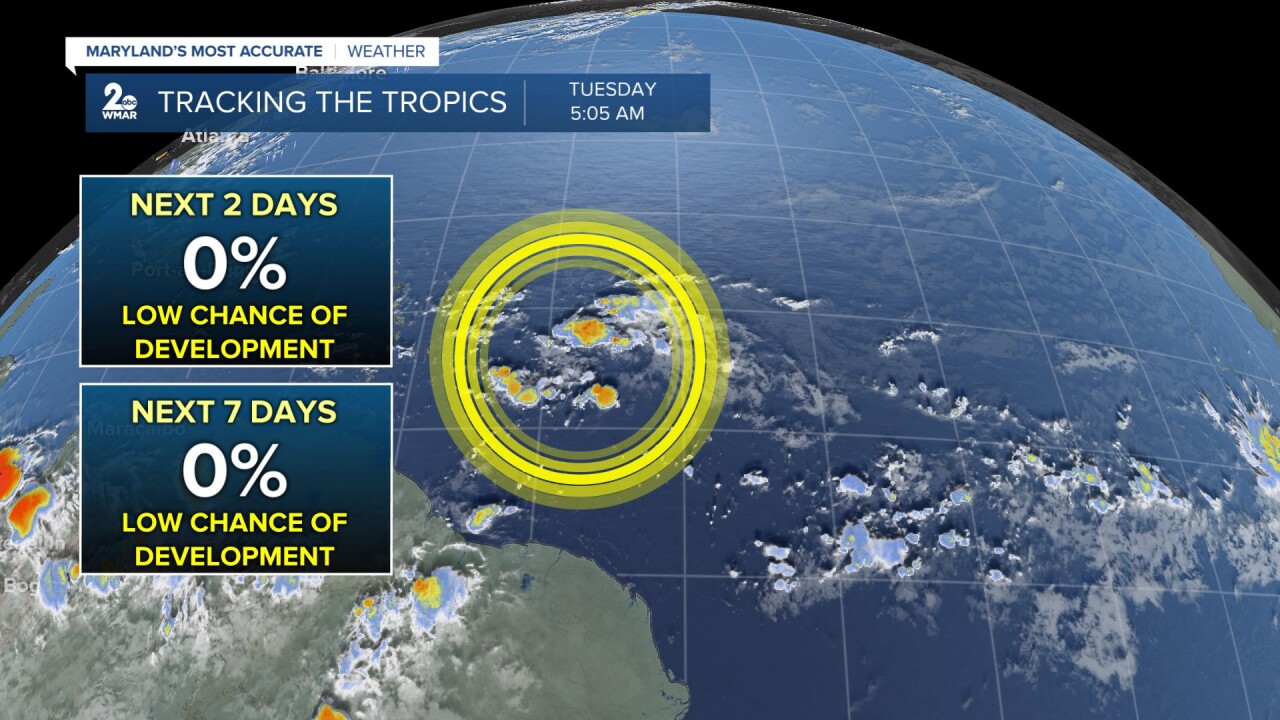
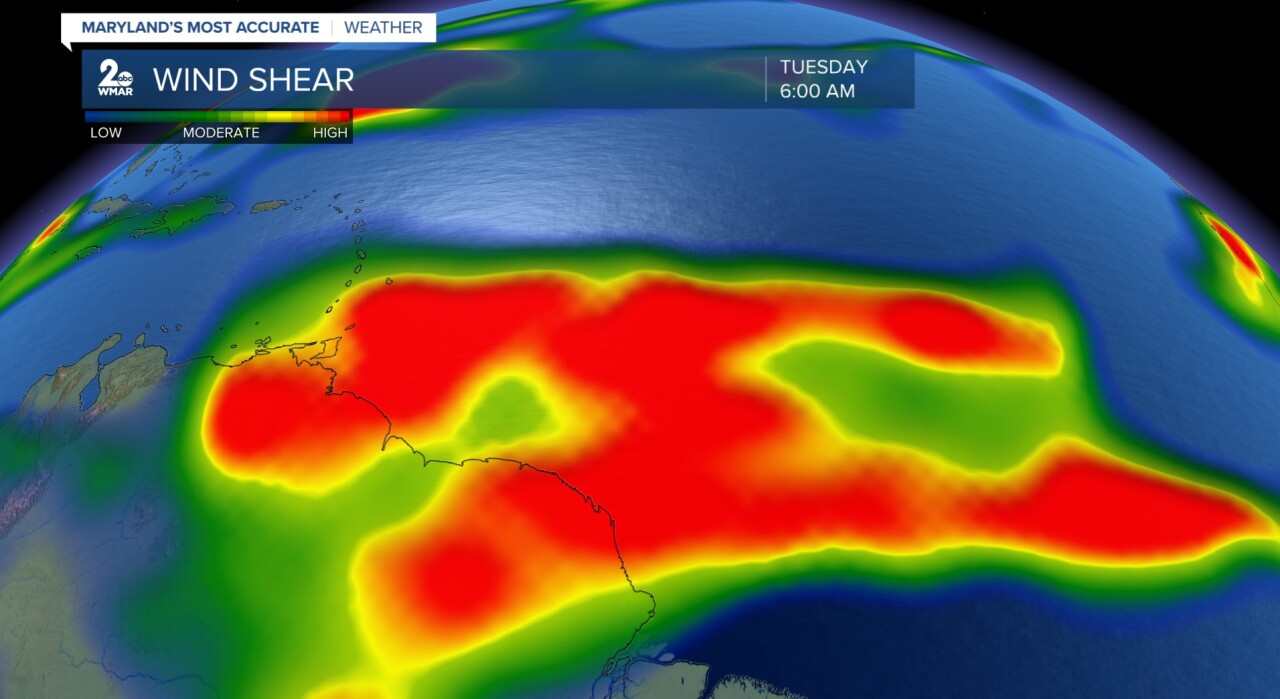
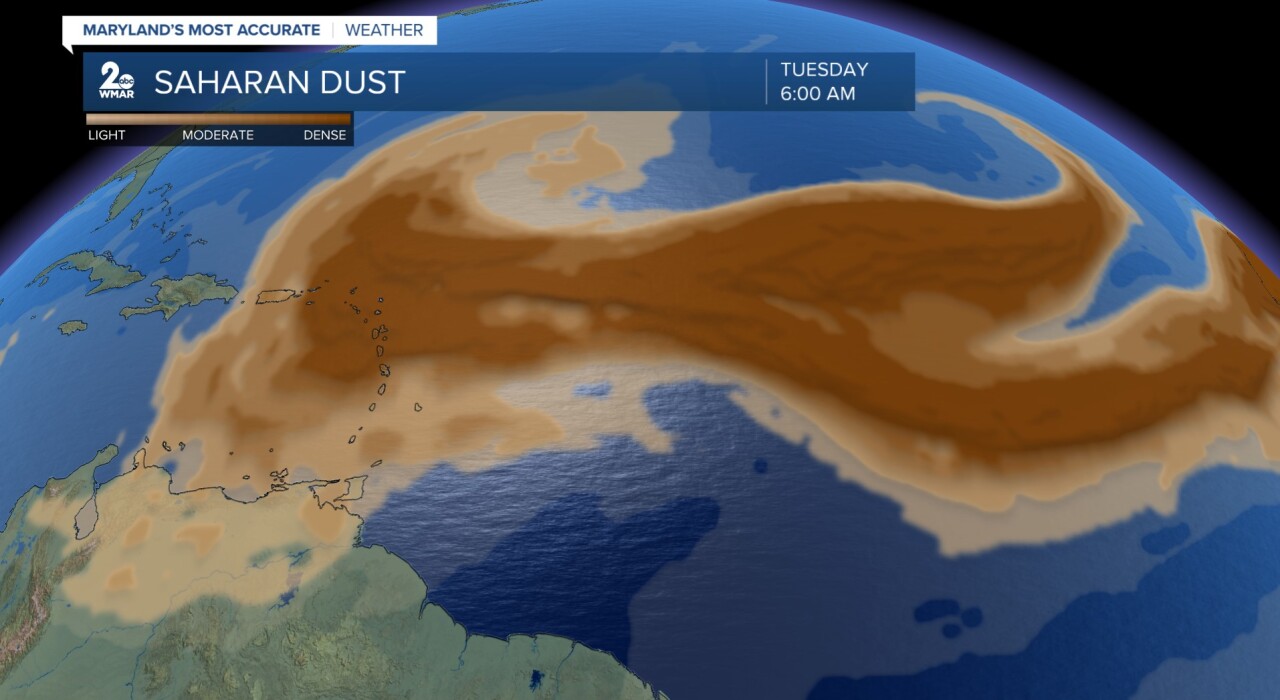
#StevieDanielsWX #HurricaneSeason
Email: stevie.daniels@wmar.com
Facebook: www.facebook.com/StevieDanielsWX
X: www.twitter.com/StevieDanielsWX
Instagram & TikTok: stevie_daniels_




